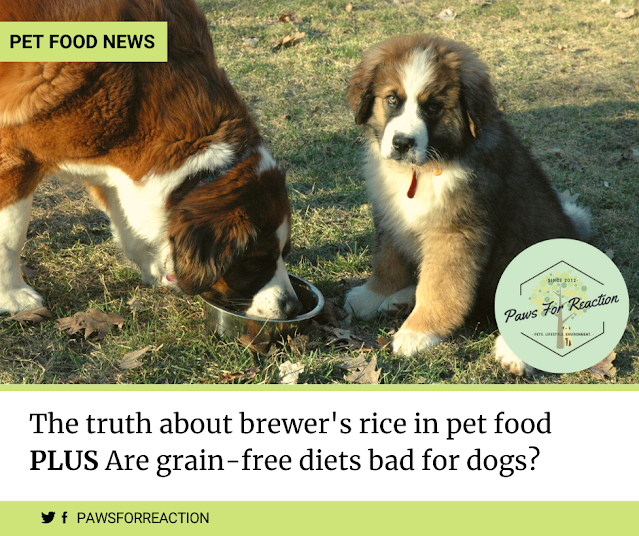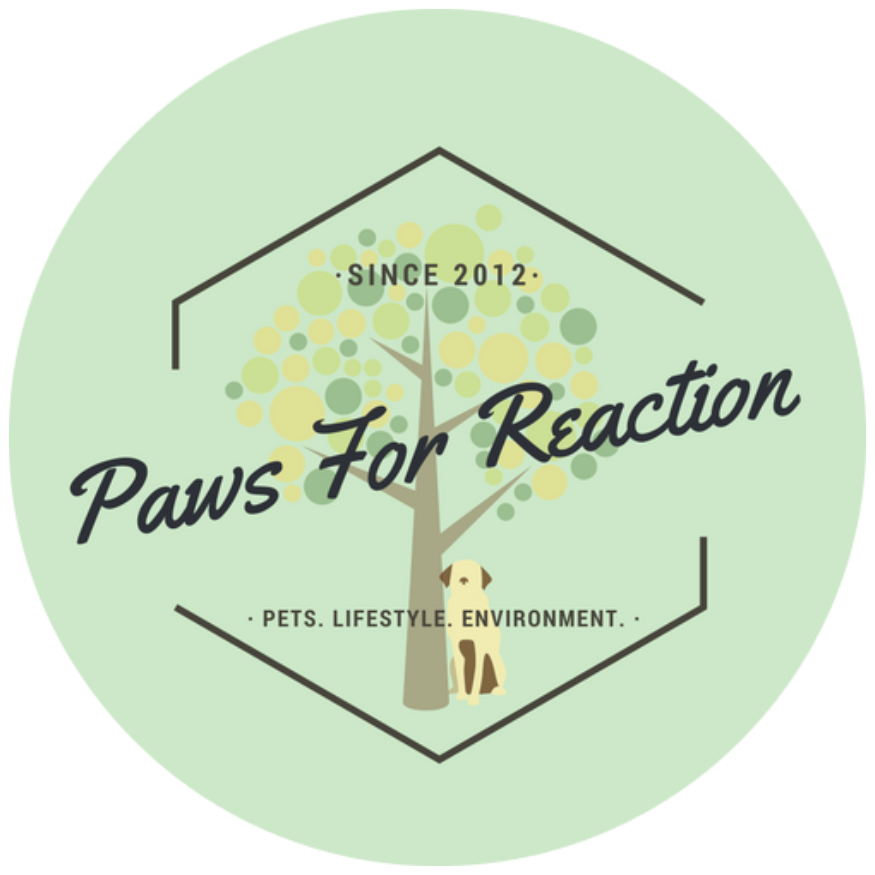
Pet food news: Truth about brewer's rice in dog food and grain-free dog food
The truth about brewer's rice in pet food
Reading the back of a bag of dog food can be confusing. Some ingredients are easy to identify- meats, fruits, and vegetables. Even some vitamins and nutrients are familiar. Other items in the list baffle pet owners. Nutrients, the quality of the ingredients, and where they are sourced is far more important than the ingredients on that list. The same goes for brewer's rice. A low-quality product purchased from an illegitimate source can be bad for your pet. If the ingredients are regulated and of the highest quality, it makes all the difference.
I often get questions about brewer’s rice. What is brewer's rice? Why is brewer's rice in dog food? Where does brewer's rice come from? There are common misconceptions about brewer’s rice.
What is brewer's rice?
What is brewer's rice?
Brewer’s rice is small fragments of rice kernels that have been separated from the larger kernels of milled rice. It can be found in some dog and cat foods. It is found in high-quality pet food and low-quality pet food. This type of rice was traditionally used for brewing alcohol and is where the name ‘brewer’s rice’ originated from. The brewer's rice in pet food likely did not come from a brewery. The fragments of rice are not aesthetically pleasing to us humans. The perfect kernels of rice are used for human consumption and the broken kernels go to pet food. Rice is a grain. Grains are easy to obtain and inexpensive and are often used in pet food. Grains are not bad, in fact, I highly recommend avoiding grain-free dog food.
Is brewer's rice bad for dogs?
Brewer’s rice- also known as broken rice- is an easily digested carbohydrate that contains fiber. Fiber is important in a dog’s diet. Although fragments may contain fewer nutrients than a whole grains of rice, it's not necessarily a bad ingredient. It's a by-product created when milling human-grade food. It does not contain a large amount of nutritional value, nor is it harmful to cats and dogs- unless they are allergic. Brewer’s rice is sold exclusively for dairy feed and pet food.
 |
Are brewer's rice and grains nutritious in dog food?
The key to your dog’s health regarding brewer’s rice is how it fits in on the ingredient list and whether it comes from a reliable source. Most super-premium foods use rice, which is richer in nutrients. It's not uncommon to see rice listed first to fourth on the ingredients list. Grains contain carbohydrates and too many carbs can make your pet gain weight rapidly. Pet food using 'meal' instead of meat may have grains higher on the ingredient list. That is because 'meal' contains more nutrients and weighs less. 'Meal' is real meat with the water and fat removed.
Real meat in pet food weighs more because of the moisture (water) contained in the meat. Diets using real meat can be deceiving because the meat will list higher than the grains due to the water weight. These diets may have more carbohydrates than pet owners are aware of.
Some pet food companies also do something called 'ingredient splitting.' You may notice the ingredient list says 'wheat' and 'wheat flour' and 'wheat gluten' for example. This is a way that pet food companies split the ingredient, in this case, 'wheat,' on the list so it appears further down on the list. The purpose of this is to make the diet look like it is less carbohydrate-heavy than it actually is.
Should I feed my dog grain-free dog food?
At this time, I and many other people working in the veterinary industry (including veterinarians and veterinary nutritionists) recommend avoiding grain-free diets for dogs. In 2019, the University of California Davis (UC Davis) Veterinarians published a study showing dogs fed some popular grain-free, boutique, and novelty diets could be at risk of a type of heart disease called dilated cardiomyopathy (DCM).
Soon after the U.S. Food and Drug Administration (FDA) approved the study and began investigating. Diets containing peas, lentils, legumes, and/or potatoes in replacement of grains have been linked to DCM in dogs. Some dogs, especially larger breeds, have a taurine deficiency and are more likely to develop DCM, however, many of these cases reported in the study included breeds of dogs not previously known to have a genetic predisposition to the disease. The results do not show conclusively that diets are the cause of DCM, but the data presented is hard to ignore. There appears to be a link, and the element of risk is undeniable.
Grain-free is a marketing ploy and is trendy among pet owners because of its association with human diets. Grain-free does not have any nutritional benefits. Dog owners should stop feeding grain-free diets until we know more. Is your dog's life worth the risk?
Selecting the right dog food with the most nutritious ingredients can be tricky and every dog's needs are different. But the truth about brewer’s rice is that it's not harmful, but also not overly helpful. Consult your veterinarian for a diet recommendation for your pet. Your pet's doctor will know what diets contain the best nutrients and highest-quality ingredients. My rule: if your pet food bag doesn't have a phone number you can call to contact the pet food company and ask questions, DO NOT feed that food.
Give me a high paw and follow Paws For Reaction on Pinterest
Like Paws for Reaction on Facebook
Follow @PawsForReaction on Twitter
Follow @PawsForReaction on Instagram
Follow my blog and subscribe in the sidebar >>
brewers
brewers rice
byproducts
canine
carbs
cat
cat food
dog
dog food
dogs
fiber
filler
food
healthm nutrition
meat
pet
pet food
pet owner
rice
























16 Comentarios
I was looking for such type of post. Of course it looks hard to find a best dog food with total ingredients for your cherished puppy.
ReplyDeleteChoosing to buy dog food is also a concern. The issues of caring for pitbull dogs as well as choosing what types of food to buy will be more informative here.
ReplyDeleteWow :)
ReplyDeleteThis is an incredible collection of ideas!
Waiting for more helpful pieces.
You would amazing to read a similar one here-
petreviewz blog
The FDA never recommended switching dog foods based on the DCM studies, and after three years of panic caused by the initial UC DAVIS study (funded by Hill's and Royal Canin) and 150 studies, there have been no links found between legume and other grain-free carbs and DCM. The FDA quietly admitted this on September 2020, and last I checked has yet to update their official page on DCM. Around 550 dogs in one year, out of 89 million dogs in the US, is a miniscule number (less than 0.001%) and within the numbers expected for genetic predispositions. The dogs that recovered for their heart conditions when switching from the diets they had been on (which weren't all grain free) to prescription diets (the very same diets created by those funding the research) also received taurine supplementation, and heart medications. Far too many variable to even begin to determine the cause, which a non-biased, experienced researched would know, and the study was done on less than ten dogs! Grain free foods are not the enemy - highly processed, unvaried, sugary diets are the enemy. And for vets, who are supposed to be able to properly research and understand such studies, I'm flabbergasted that so many are buying into the fear and panic of the headlines about "grain-free causing heart problems in dogs".
ReplyDeleteThe ONLY thing all of the dogs in the reports over the last few years had in common, in terms of their diets, were that they were all on the same food for months or years. Staying on one food for months and years means your pet is likely to develop a deficiency in some micronutrient (such as taurine) and the best way to combat this is to vary the diet (no less than every 3 months) and provide your pet as much fresh, whole food as possible. Between the ambiguous, questionable, and downright lazy and unsafe practices of the PFI, and the ultr-processed, protein-denatured, high-sugar diets laden with pesticides and synthetic preservatives, colors, flavors, and vitamins - it's no wonder our pets are getting sick. We're in the middle of a canine and feline health crisis - and it has nothing to do with peas!
Really, shame on you for not actually reading and understanding the studies, the announcements by the FDA themselves, and for not using the knowledge of dog and cat physiology to make science-based recommendations on what people should feed their animals.
Oh - and Grain Free is not a "trend" or a "marketing ploy" for crying out loud. People made a massive switch to grain free foods because grains were killing dogs between 2000 - 2010. Ever heard of alflatoxins? And now, with the help of veterinarians like you, people are switching back to these low quality grain-in foods, and 30 dogs have already died because of these dangerous molds that grow in poorly stored grains. Again, shame on you.
ReplyDeleteI found decent information in your article. I am impressed with how nicely you described this subject, It is a gainful article for us. Thanks for sharing it. pet toys Australia
ReplyDeleteNice piece of information @PFR :)
ReplyDeleteKeep up the good writing!
4 cats 2
Barks while stepping back - they have likely previously disclosed to you they are miserable and are currently blowing up!Paw Print Kit
ReplyDeleteLiving in a small apartment or flat makes it difficult to keep a dog. It can be quite annoying having to keep the dog outside while you are cooking, eating, or doing any other chores. Also webpage said, the dog becomes restless. For these reasons, you need to ensure that you make your home more dog-friendly.
ReplyDeleteThanks for sharing this informational post. Your post is really helpful for those people who are looking for the best Natural Food for Dogs and Cats. I really appreciate you for this post.
ReplyDeleteAs sustainability becomes increasingly important, it's great to see a rise in eco-friendly pet accessories. From biodegradable poop bags to recycled material toys and organic pet beds, these options allow us to minimize our environmental impact while still providing for our pets' needs. Pet accessories
ReplyDeleteAs sustainability becomes increasingly important, it's great to see a rise in eco-friendly pet accessories. From biodegradable poop bags to recycled material toys and organic pet beds, these options allow us to minimize our environmental impact while still providing for our pets' needs. Pet accessories
ReplyDeleteBrewers rice is a common ingredient found in many dog foods, often serving as a source of carbohydrates. While it's a by-product of the rice milling process, it still holds nutritional value for our canine friends. For a more in-depth look at this and other ingredients in dog food, as well as insights on canine health and well-being, visit antibiotics for dogs.
ReplyDeleteThank You and that i have a super supply: House Renovation What Order hgtv home remodel
ReplyDeleteNice articles and your information valuable and good articles thank for the sharing information Dog Veterinary Diets
ReplyDeleteNice articles and your information valuable and good articles thank for the sharing information veterinary diet cat food
ReplyDelete